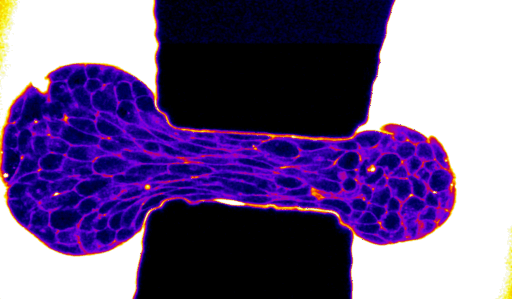Mechanics of biological tissus
Investigators: Hélène Delanoe-Ayari

Mechanics is playing an important role on cell behavior and fate. It is true for as different processes as embryonic development, blood clotting or tumor expansion in cancer. It is thus now a central aim in the biophysics field to get a proper rheological description of tissues in order to understand all these behaviors and disentangle mechanics versus genetics cues.
To answer these issues, we are using cellular aggregates of embryonic mouse cells. Inside an aggregates all the cells are alike so that genetic variations in our model tissues can be neglected. We then submit our tissues to different kind of stresses. For examples, we oblige our aggregates to flow through a microfluidic channel (See movie), cells contour can then be followed in 3D using a fluorescent marker which will only fill the extracellular space. We are using two-photon microscopy to image these tissues as they are really opaque. We can then quantified deformation and neighbor exchange rate as a function of strain rates.
One unknown is still needed if we want to completely understand the mechanics of such a system: the local stress. For this purpose, we are developing small soft polymer probes, whose deformation once inserted in tissues, will give us access to this unknown local stress.


















